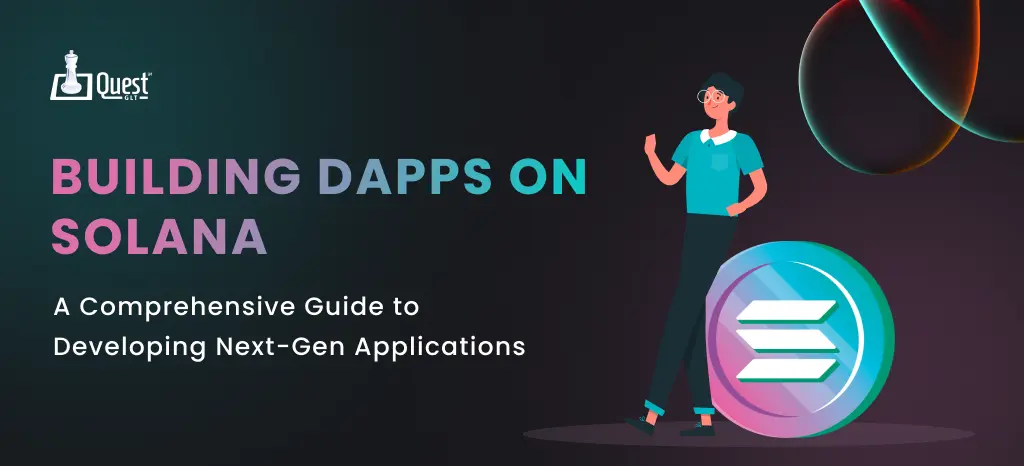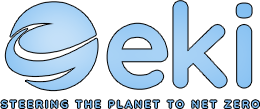
The decentralized application (dApp) ecosystem is growing exponentially and Solana is becoming one of the most prominent platforms. Analyzing the probability of transactions, which exceeds 50,000 per second along with the minimal fees that constitute merely a few cents, it is quite understandable why more and more developers tend to turn to this innovative blockchain.
Imagine a world where applications work smoothly, in terms of availability, usability, and freedom without necessarily having to bow to a corporate overlord. This is what dApps promises, and Solana is making it a reality. In the first quarter of 2024, the aggregated value of DeFi projects on Solana crossed $30 billion, underlining the platform’s massive growth.
Are you ready to enter this transformation? We'll direct you through everything you will need to know to begin your development journey right up to deploying your first application that will make an impact through the use of Solana. This blog will help you learn the underlying fundamentals of this layered network, even if you’re a new developer eager to create world-class dApps on Solana
What is Solana?
Unlike other blockchains, Solana is a high-performance blockchain platform developed to operate decentralized applications (dApps) more quickly and inexpensively. Since its inception in 2020, Solana has uniquely combined Proof-of-stake (PoS) and proof-of-history (PoH) approaches to validate transactions. Due to its unique methodology, Solana can handle hundreds of transactions per second, which makes it a great option for developers creating dApps for payments, gambling, and banking. Building dApps on Solana is made much more appealing by the platform's own cryptocurrency, SOL, which also makes it possible to participate in network governance and facilitate transaction fees.
Solana's Innovative Architecture: A Deep Dive
Solana’s architecture is crafted for exceptional performance and scalability. Let’s explore its standout features:
1.Hybrid Consensus Mechanism:
Solana utilizes a combination of Proof of Stake (PoS) and Proof of History (PoH). The PoS makes sure that the nodes holding more stakes will have more voting power than others while the PoH gives a chronological order of the transactions of the blocks thus increasing efficiency.
2.Dynamic Leader Rotation:
Instead of traditional sharding, Solana uses the concept called partitioning in which the validators switch between being the leader who generates the blocks and orders the transactions. This approach keeps the speed high and avoids such things as sharding that are associated with the scaling process.
3.Parallel Transaction Processing:
Solana uses parallel processing where it uses GPUs, and SSDs to process multiple transactions at a go. This is opposite to many other blockchains where developers make use of a single thread only, which greatly increases the speed.
4.Turbine Protocol:
This protocol provides the best mechanism for the passing of blocks from one validator to another, ensuring rapid data flow across the network.
This unique integration of technologies enables Solana to scale the network to process thousands of transactions per second and offer faster transaction finality than other existing blockchains.
Key Features of Solana
-
High Throughput: The capabilities should lie in its ability to handle large volumes of transaction processing, thousands every second.
-
Low Latency: Fast processing of all the transactions.
-
Low Fees: Cost-effective and lower transaction fees compared to other blockchains in the market.
-
Scalability: Supports scaling without invoking the penalty of performance downgrade.
-
Robust Developer Tools: A comprehensive development tool and libraries for developers.
What Are dApps?
dApps are software applications operating on blockchain networks such as Solana. While regular applications are regulated by an administrator figure, dApps are run on the blockchain protocol. This has the overall effect of making them immune to censorship, increasing the level of transparency as well as a security improvement. dApps are going to disrupt several sectors such as finance (DeFi), gaming (proving fair), and social media (user data ownership). Through the principles of blockchain, dApps have created revolutionary solutions for how digital applications are run and used.
The Core Features of dApps
-
Decentralization: dApps work across a web-connected network therefore they cannot be compromised at any single point.
-
Transparency: Business activities consist of transactions and operations hence are easy to track and can be audited by anyone.
-
Security: Security improvements that have been brought by the use of cryptographic protocols.
-
Immutability: Once data is written on the blockchain, it cannot be changed since it forms a permanent and unalterable record.
Incentivization: In many circumstances, dApps have a structure of a bonus program that motivates users and participants.
Reasons: Why dApp Developers are Choosing Solana
The main aspects that define Solana include its impressive architecture as well as performance, which have prompted dApp developers to work with it. Here’s why:
-
Speed and Efficiency: Solana’s high throughput and low latency, make it best for applications requiring fast transactions.
-
Cost-Effectiveness: Low transaction fees are ideal for developers and the users of these applications.
-
Scalability: Solana’s ability to handle a large number of transactions ensures that dApps can grow without performance degradation.
-
Developer-Friendly Environment: Solana offers a strong set of tools, manuals, and community support for developers, making it easier to create and launch dApps.
How to Build a DApp on Solana?
1. Setting Up the Development Environment
Before you begin building dApps, make sure you have installed the required tools:
-
Rust: Solana smart contracts are written in Rust. Download and install Rust from the official website.
-
Solana CLI: Programs for working with the Solana blockchain through the terminal. Install the Solana CLI.
-
Anchor: A system for the Solana dApp development represents building and deploying smart contracts with basic integrated tools. Install Anchor and simplify your work.
2. Create a New Solana Program
Setting up a new project by using Anchor. This provides a basic structure for building your Solana program.
3. Write the Smart Contract
Go to the appropriate file in your project folder in which you will describe the Solana program. Do the coding of the dApp to incorporate the laid down logic. For instance, you may create a basic program that will help in expansion.
4. Craft and Deploy the Program
Use Anchor to complete your Rust code into an executable program, which can be deployed on Solana. Once the program, you can expect to work it on the Solana devnet, which is useful for testing smart contracts in a development ecosystem.
5. Create a Frontend to Interact with the Program
Create a frontend with the help of JavaScript and the Solana Web3. js library to communicate directly with your launched application. This implies that there is a creation of an interface to the Solana network, linking to the smart contract and designing controls for users to interface with the blockchain.
6. Run the Frontend
Execute the frontend code to start a connection with the Solana program. This allows the users to interface with the dApp directly through the web and interact by; checking, setting, or getting the count or balance.
These are a few essential guidelines that will help a user create, deploy, and further engage with the dApp located on the Solana network. Migrating your dApp to the Solana blockchain guarantees that your dApp can handle real-world traffic, is cost-effective, and has all the features needed to build high-quality dApps. Solana is defined as a highly capable platform for building new applications on the decentralized blockchain infrastructure suitable for both beginners in blockchain development and experienced developers.
Solana Vs. Ethereum: A Comparative Analysis
-
Consensus Mechanism: Solana relies on Proof of History and Tower BFT while Ethereum uses a unique blockchain called Proof of Stake (PoS) in Ethereum 2.0.
-
Transaction Speed: The Solana blockchain can manage up to 65,000 transactions per second, whereas Ethereum processes 30 transactions per second.
-
Transaction Fees: Solana’s transaction fees are lower compared to Ethereum.
-
Scalability: Due to Solana’s architectural design it is capable to handle greater scalability.
Conclusion
Starting the dApps development journey on Solana puts you as a visionary in a quickly evolving world of digital ecosystems. With a strong sense understanding of these tools, and the Solana architecture is feasible to develop transformational Web3 apps. Therefore, this innovative infrastructure and creative approach can alter the world of decentralized applications, propelling the limits of what technology can accomplish.
Do not just develop a dApp but design a gateway to an entirely new platform of digital existence. Seize the opportunities, step up your imagination, and be at the forefront of the trend in the emerging field of dApp development on Solana.













